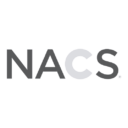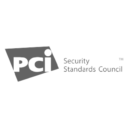
Insights
Maximizing Margins: Turning Your Pricebook into a Profit Machine

Every retailer worth its salt fundamentally understands that pricebook is a massive, complex database and maintaining it is a huge undertaking requiring great attention to detail and constant updates. That said, it’s easy for pricebook teams to get caught up in the sheer volume of data that must be managed and miss the opportunity to use the pricebook more strategically. This is especially true when turnover and/or a lack of training for the pricebook and category management teams keep the organization from recognizing and leveraging the full functionality of the pricebook—functionality that can transform the tool from simply a database into a powerful driver and protector of profits.
The good news is that retailers that want to be more proactive about going after their margin dollars can usually quickly capture significant gains. Taking the following five steps will go a long way in upping any retailer’s pricebook game and help avoid the cost and pricing problems that can, and do, erode profitability.
1. Prioritize data quality.
First and foremost, what goes into the pricebook—costs, retails, pack, quantity, sizes, even the item descriptions that show up on customers’ receipts— must be correct. Pricebook impacts almost every step in the merchandise management process. If the data entered in the system isn’t timely or accurate, retailers are in for an avalanche of downstream problems ranging from ordering, receiving, and scanning issues, to inaccurate exception reports, erroneous inventory, and audit results. Missed rebates are a drain on margins, a problem often caused by poor data management and process gaps. This situation leads to lower-than-expected category profit margins, a core KPI for category managers. Excluding buydowns, retailers should be getting 2-5% of sales in the form of rebates.
The foundational structure in pricebook begins with clear alignment between accounting, operations, and category management to understand the full capabilities within the pricebook solution to ensure both best practice configuration and maximum functionality. Pricebook must be properly configured to support the accounting methodologies and reporting structure needed to achieve the overarching strategic objectives of the company.
Establishing good data hygiene must begin with properly setting up the pricebook with the right structure and hierarchy. Using NACS category definitions rolling up to departments for the desired P&L reporting as defined by the retailer is a good place to start.
In addition to the Department / NACS Category / Subcategory structure, naming conventions must be established for items and groups of items, and consistently followed.
From there, category managers and suppliers will need to be diligent about inputting correct information and keeping it up to date with any changes including promotional costs and retails. Best practices call for ten-days to two-weeks advance notice of changes, and the use of an item authorization form with adherence to populating all required data fields.
The lifecycle of merchandise must also be considered, and processes established when a decision is made to eliminate an item from the store set. The key here is to maintain our database throughout the lifecycle of an item.
2. Inspect what you expect.
Even with good data entry processes, mistakes can and do happen. It’s important to regularly and strategically self-audit your data. Be on the lookout for outliers that could indicate problems, such as inconsistent pricing for like items or unexpected margins—either high or low. Additionally, check for alignment between key reports. For example, the number of retail items in your pricebook should closely align with the maximum number of items in your store set.
Other reports can alert you to potential data integrity issues, such as a large number of exceptions, a high value of cost exceptions, a high value of price overrides, many invalid UPC scans, or a growing number of help desk inquires.
It’s always a good idea to regularly check pricebook for correct costs, including promotional costs on retail items. Remember that failing to maintain promotions in your pricebook will always lead to problems. If the vendor is giving you a promotional cost, and you haven’t updated the pricebook, it will create the perception of an undercharge. Conversely, if the vendor doesn’t honor the promotional cost, there will be no way to identify the exception if promotions are not maintained accurately in pricebook.
We routinely see $35-$70 per store per day in cost exceptions in the form of overcharges. This stems from negotiated costs not being honored by vendors or costs not input correctly into pricebook. Incorrect costs in pricebook may be negatively impacting decisions on retail pricing. Either way they are margin dollars that retailers are expecting to capture but are currently letting slip through the cracks. Much of this value can be reclaimed providing direct, positive impact to the bottom line.
3. Understand and leverage pricebook functionality.
Pricebooks are nothing if not complex. Most pricebook applications contain a great deal of functionality, and it’s not unusual for teams to be unaware of how to fully utilize the features or even unaware of what features exist. Often, this includes exception management reporting capabilities, margin controls, and other automation that can make pricebook management easier. These capabilities can automatically look for instances where invoices don’t match the data in pricebook. They can identify problems such as vendors not honoring promotions or agreed upon costs, and items not set up in pricebook or authorized for stores.
Another functionality that can make the pricebook and category management teams’ jobs much easier includes the ability to set target margins and input pricing rules to optimize and protect margins, such as automatically adjusting retail when costs change. This underscores why it is so important for those costs to be up to date and double checked for accuracy. Margin ranges can also be established and exception reports generated to review only items outside of the predefined margin range.
Considering the potential efficiency gains, not to mention the margin dollars that can be automatically captured, it is well worth the investment in training and continuous education to ensure pricebook and category management teams know how to take full advantage of the many tools at their disposal.
4. Maintain a working knowledge of the rest of the tech stack.
Pricebook doesn’t operate in a vacuum. Making the most of the technology, and allowing pricebook to be a true margin watchdog, requires understanding how the rest of the tech stack works. In particular, ERP and POS system functionality have a direct impact on how you run your pricebook, and this functionality can vary widely from system to system. For example, it’s important to know if your POS system can manage mix/matching hierarchy or day part pricing before incorporating these strategies in your pricebook.
Rebate program modules and loyalty platforms add complexity to your pricebook. It’s important to understand how these complementary systems work together and to ensure you do not have any conflicts between the technologies that will lead to friction for the business and the customer.
5. Build a symbiotic relationship between your pricebook and category management teams.
Retailers that are best at optimizing margins are intentional about ensuring their pricebook teams work hand in glove with their category management teams, regardless of where pricebook ultimately reports within the organization. In these businesses, the pricebook is viewed as much more than a data entry tool. The team is kept up to speed on pricing strategy so that it can set up pricebook to help enforce target margin management and other pricing rules and so that exceptions can be spotted sooner than later.
Constant two-way communication and data transparency are musts. Category management team members help ensure the pricebook team is kept up to date on cost changes and promotions or anything else that affects cost or retail. And the pricebook team reciprocates by immediately reporting back to category management whenever exceptions are identified.
In retail organizations where these relationships are strongest, the teams work together to monitor KPIs and take additional steps to optimize margins. Best-in-class activities include pricebook and category management teams collaboratively creating store clusters or segments where more margin dollars are attainable due to unique store attributes.
Elevate your pricebook strategy to maximize your margins.
Every retailer experiences cost and/or pricing problems that drain it of margin dollars. And every retailer has opportunities to improve how it uses its pricebook to recapture those profits. If it has been a while since your pricebook strategy and processes have been reviewed, it may be worth investing in an assessment to see where your greatest improvement opportunities and ROI lie. To learn more, contact W. Capra. We can help you take a closer look to see where you could more fully leverage your pricebook to expand your margins and build your profitability.
How Seamless is Your Customer Journey?
A seamless customer journey starts with an honest assessment of your operations. Most retailers know they need to create value […]
Why You Need An Automation Journey Map
Investment isn’t enough. To maximize the potential of retail automation technology, companies need a deliberate approach. Most of the business […]
Turn Your Customer-First Mantra Into Strategic Action
Retailers have been saying it for years, “We need to put the customer at the center of everything we do.” […]
Related Insights
CSP Magazine – What C-Store Retailers Need to Do to Succeed in 2025
This article, by W. Capra’s Tom Newbould as a guest author, was published in the February 2025 edition of CSP […]
Maximize Category Margins – Part 1: Overcoming Challenges Amid Rising Costs
The flood of escalating costs has been an ongoing challenge for retailers. Though balancing the protection of category margins while […]
Liza Salaria ~ Top Women In Convenience Senior Level Leader
We are very proud of Liza Salaria’s recognition as a CSNews’ Top Women In Convenience Senior Level Leader. This well-deserved […]
Want to stay in touch? Subscribe to the Newsletter















